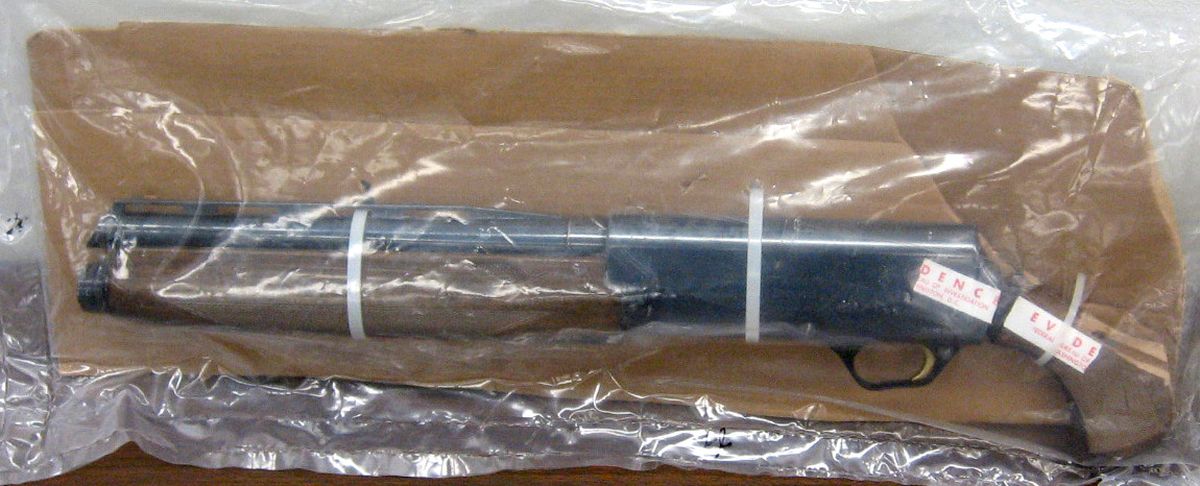Tapes show Duncan with kids at campsite
Jurors see images of Dylan, Shasta eating, playing

BOISE – Videotapes of Shasta and Dylan Groene clowning around at a Montana campsite with their abductor, Joseph Duncan, were played to the jury in Duncan’s federal death sentence trial Friday.
Taken out of context, the footage plays like home videos of a family vacation. The video, however, has an ominous undercurrent.
After Duncan walks over to the back of his Jeep with a large knife, the two children join him in the picture.
“Dylan, you’re kinda making me laugh,” Shasta says to her 9-year-old brother, as Duncan begins slicing a large watermelon. “You were like, ‘No, please, don’t,’ and now you’re all smiling and stuff.”
A shirtless Dylan is seen eating four slices of watermelon. A bit later, the 8-year-old girl makes a startling reference to Duncan’s sexual abuse.
Later, the camera focuses on a burning log in the campfire that appears to have markings on it, and Duncan says, “We’ll record our wishes being burned. My wishes for forgiveness. Your wishes for – what?”
“Going home!” Dylan calls out. After some banter from both kids, Shasta declares, “I want a purse and makeup and I want to go home and I want one thousand million dollars.”
Duncan responds, “Lots of luck, people. At least my wish was something I might get.”
Jurors also were shown numerous photos of the children at the campsite, posing, playing and sleeping. Steve Groene, their father, sat stoically through the videos, while his female companion slumped on the courtroom bench beside him, clutching a tissue. After a few of the still photos were shown, Groene and two women who have accompanied him to court each day stood and left the courtroom, and didn’t return.
Duncan already has pleaded guilty to murdering the two children’s 13-year-old brother, their mother and her fiancé in their North Idaho home in order to get to the two youngsters, and to kidnapping and molesting the children and killing Dylan during the summer of 2005. He’s awaiting a decision from the jury only on his sentence – either death or life in prison without possibility of release.
Jurors also saw the sawed-off 12-gauge shotgun that Duncan used to murder Dylan, and federal prosecutors revealed the child’s blood was found on the gun.
The shotgun, encased in a clear plastic package and displayed by Idaho State Police Detective Sgt. Fred Swanson, was one of several items recovered from Duncan’s vehicle admitted into evidence Friday.
Jurors also saw journal entries in which Duncan detailed his multi-state hunt for children before he targeted the Groenes, and receipts and testimony showing that he planned well in advance, buying many of the items used in the crimes a month or more before he committed them.
The 45-year-old Duncan, his long hair pulled back into a knot at the nape of his neck, disputed little of it. He agreed in a stipulation with prosecutors that blood found both on the gun and on duct tape removed from the gun was Dylan’s.
The duct tape had been wrapped around the grip area of the stock; FBI analysts removed it while testing the gun at their lab. Both the duct tape and the gun itself tested positive for Dylan’s DNA; Duncan shot the boy point-blank, holding the shotgun to his head.
Duncan sat with his eyes closed for much of the morning’s proceedings, and at one point seemed to be snoring when it was his turn to once again say, “No objection” to another piece of the prosecution’s proposed evidence. He objected only to one exhibit in the afternoon, a receipt for a returned camcorder that he said was irrelevant. The judge overruled him.
Duncan, who is acting as his own attorney, asked few questions of the seven witnesses called Friday. Friday’s testimony included two computer forensic experts, who testified about files found on Duncan’s laptop computer and a microdrive, including videos of Dylan.
Loren Mercer, an FBI computer forensic examiner from Salt Lake City, said he was able to access most of the user files on Duncan’s laptop, which was found in his Jeep, but couldn’t break into an encrypted file. “It’s a PGP file, it stands for Pretty Good Privacy,” Mercer told the court. “The password system for those files is fairly close to impossible to crack. … We ran 48 processors against that for a month.”
Duncan, who was just a few credits shy of a bachelor’s degree in computer science when arrested, asked Mercer several technical questions.
As Mercer testified, prosecutors asked him to identify several of Duncan’s journal entries, which had been entered in Outlook files on his laptop. In them, Duncan detailed his travels around the region, looking for children to attack. One of the entries said in part: “Stayed awake by smoking crack, but got tired … got a roadside hotel with a cute small little boy playing in the parking lot but he had his head shaved funny and that turned me off.”
Other items seized from Duncan’s vehicle and entered into evidence were a copy of the Missoulian newspaper from June 26, 2005; a pink and purple girl’s bathing suit found in a pink bag; a pair of black gloves; a large “Rambo-style” knife; a hacksaw and larger tree saw; video camera, digital camera and other electronics; a detailed topographical map of Montana’s Lolo National Forest with pencil markings; a package that had held zip-ties like those used to bind his victims; and a night-vision scope.
There also was an Excel spreadsheet Duncan had made when he was trying to decide whether to commit his crimes, assigning point values to various pluses and minuses. “I have a chance to live out my fantasies,” Duncan wrote among the pluses, listing under that, “revenge, sex, no more cares.”
Testimony in the case will continue on Monday.